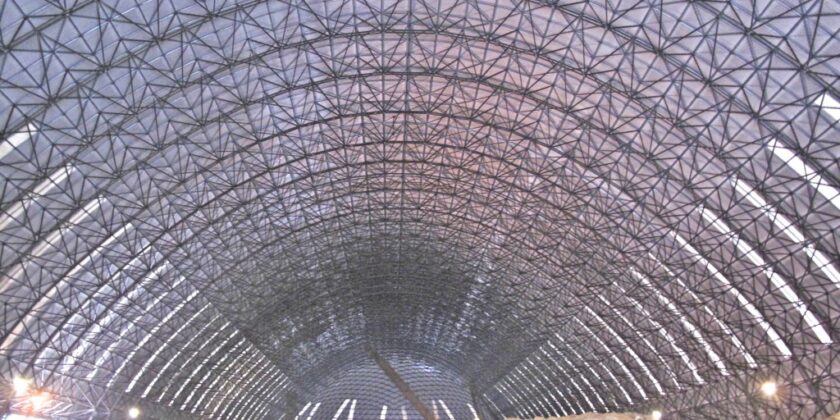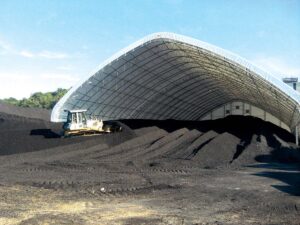Introduction
Limestone, a sedimentary rock composed primarily of calcium carbonate, is widely used across various industries. Its versatility stems from its unique properties and chemical composition. In this article, we delve into the world of limestone storage, exploring its importance, best practices, and considerations.
What is Limestone?
Limestone is a natural rock formed from the remains of marine organisms such as coral and mollusks. Over millions of years, these organic remains are compressed and cemented together to form limestone. It is typically found in shades of grey, white, or tan, but can also exhibit other colours depending on the impurities present.
Properties of Limestone
- Chemical Composition: The chemical composition of limestone is primarily calcium carbonate (CaCO3), with varying levels of impurities such as clay, sand, and organic matter. These impurities can affect the colour and properties of the limestone.
- Physical Properties: Limestone is renowned for its durability and versatility. It is relatively soft compared to other rocks, making it easy to cut and carve. However, it becomes harder when exposed to heat and pressure, making it ideal for various applications.
Uses of Limestone
Limestone is a versatile rock with numerous applications across different industries. Some of its common uses include:
- Construction Industry: Limestone is a key ingredient in the manufacturing of cement and concrete. It is used as a raw material in the production of these materials, providing strength and durability to structures.
- Agriculture: In agriculture, limestone is used to improve soil quality and pH balance. It is often applied to fields to reduce acidity and provide essential nutrients to crops.
- Environmental Applications: Limestone is used in environmental applications such as water treatment and flue gas desulfurization. It helps neutralize acidic pollutants and remove impurities from industrial emissions.
Types of Limestone
There are several types of limestone, each with its own unique characteristics. Some of the common types include:
- Chalk: Chalk is a soft, white limestone composed of skeletal fragments of marine organisms. It is commonly used in classrooms and as a drawing material.
- Coquina: Coquina is a type of limestone composed of loosely consolidated shell fragments. It is often used as a building material in coastal areas.
- Fossiliferous Limestone: Fossiliferous limestone contains an abundance of fossils, making it a popular choice for decorative purposes. It is often used in countertops and flooring.
- Limestone Storage: Proper storage of limestone is crucial to maintaining its quality and integrity. Improper storage can lead to degradation and loss of material, resulting in financial losses for businesses.
Importance of Proper Storage
- Proper storage helps protect limestone from environmental factors such as moisture, temperature fluctuations, and contamination. It also ensures easy access and handling of the material when needed.
- Best Practices for Limestone Storage
- Store limestone in a dry, well-ventilated area to prevent moisture buildup.
- Avoid storing limestone near sources of heat or direct sunlight, as this can cause it to degrade.
- Use appropriate containers or storage facilities to prevent contamination from other materials.
Storage Facilities
Limestone can be stored in both indoor and outdoor facilities, depending on the quantity and specific requirements of the material.
- Indoor Storage: Indoor storage facilities offer better protection against environmental factors such as moisture and temperature fluctuations. They are ideal for storing smaller quantities of limestone or when immediate access is required for limestone storage.
- Outdoor Storage: Outdoor storage is suitable for larger quantities of limestone storage. However, it requires proper covering and protection to prevent degradation due to exposure to the elements.
Storage Considerations
When storing limestone, several factors should be considered to ensure its quality and longevity.
- Moisture Control: Moisture can cause limestone to degrade over time. It is essential to control humidity levels in limestone storage areas and ensure proper ventilation to prevent moisture buildup.
- Temperature Control: Limestone should be stored at a stable temperature to prevent thermal degradation. Extreme temperature fluctuations can weaken the material and affect its properties.
- Contamination Prevention: Limestone should be stored away from sources of contamination such as chemicals, oils, and other materials that can degrade its quality. It should also be stored in clean, dry containers to prevent contamination.
Conclusion
Limestone is a valuable resource with diverse applications across industries. Proper storage is essential to maintain its quality and integrity. By following best practices and considering key factors, businesses can ensure the long-term viability of their limestone supply.




